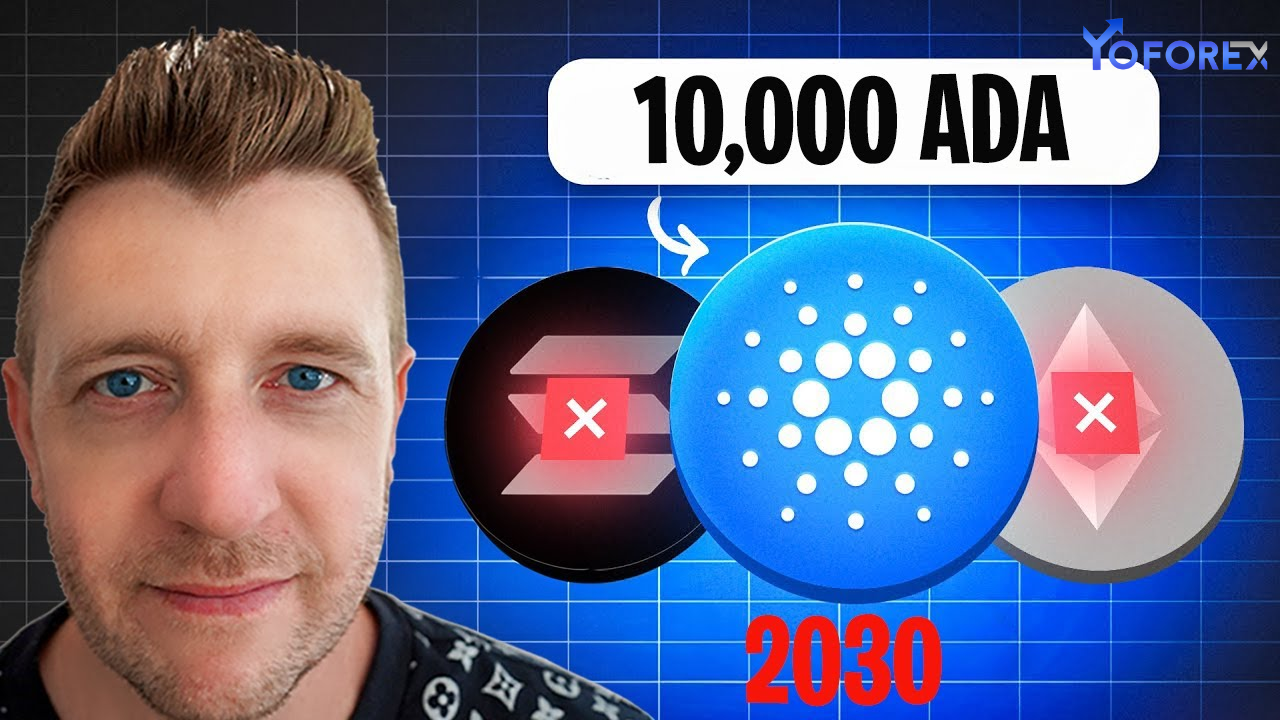Predicting the future value of 10,000 Cardano (ADA) tokens by 2030 involves speculation influenced by a mix of technological, market, and regulatory factors. Cardano, with its focus on scalability, sustainability, and interoperability, has positioned itself as a significant player in the blockchain space. In this blog, we will explore the key factors that could affect ADA’s value and potential price scenarios for 2030.
Factors Influencing Cardano’s Value by 2030 🚀
1. Technological Development
The technological advancements within the Cardano ecosystem will be a major driver of ADA’s value. The network’s roadmap includes several critical milestones:
- Scalability: Cardano aims to increase its transaction throughput with Hydra, a layer 2 scaling solution.
- Smart Contracts: The Alonzo upgrade introduced smart contract functionality, making Cardano a viable competitor to Ethereum.
- Interoperability: Cardano’s focus on connecting with other blockchains enhances its potential for broader adoption.
If these developments are successful and well-received, ADA could see a surge in demand and value.

2. Adoption and Use Cases
The adoption of Cardano for real-world use cases and decentralized applications (dApps) will significantly influence its price.
- DeFi Ecosystem: As decentralized finance grows, Cardano’s low transaction fees and high-security features could attract developers.
- Enterprise Solutions: Partnerships with governments and businesses, such as its collaboration with Ethiopia’s Ministry of Education, highlight Cardano’s potential for mass adoption.
- NFT Market: Cardano’s energy-efficient blockchain offers an alternative for non-fungible token creators looking for sustainable solutions.
3. Market Sentiment
The overall sentiment in the cryptocurrency market will play a crucial role in determining ADA’s price:
- Bitcoin and Ethereum Influence: The performance of leading cryptocurrencies often dictates market trends.
- Investor Confidence: Positive developments and consistent delivery on promises will build trust in Cardano.
- Social Media and Community Support: Cardano has a strong and active community that could help maintain investor enthusiasm.
4. Regulatory Environment
Regulatory developments could significantly impact ADA’s trajectory:
- Favorable Regulations: Clear and supportive crypto policies could boost ADA’s adoption.
- Unfavorable Regulations: Stringent rules or outright bans in key markets could hinder growth.
Potential Price Scenarios for 2030 💹
Given the uncertainties surrounding the cryptocurrency market, we can outline optimistic, moderate, and pessimistic scenarios for ADA’s value by 2030.
Optimistic Scenario: $10 to $50 per ADA
- Key Assumptions:
- Cardano achieves major technological milestones, including widespread adoption of its scaling solutions.
- Significant real-world use cases and enterprise partnerships drive demand for ADA.
- Positive market sentiment and favorable regulatory conditions fuel investor confidence.
- Outcome:
- At $10 per ADA, 10,000 tokens would be worth $100,000.
- At $50 per ADA, 10,000 tokens would be worth $500,000.
Moderate Scenario: $2 to $5 per ADA
- Key Assumptions:
- Cardano continues to grow steadily but faces stiff competition from Ethereum, Solana, and other blockchains.
- Adoption is moderate, and regulatory developments are neutral.
- Outcome:
- At $2 per ADA, 10,000 tokens would be worth $20,000.
- At $5 per ADA, 10,000 tokens would be worth $50,000.
Pessimistic Scenario: $0.50 to $2 per ADA
- Key Assumptions:
- Cardano struggles to compete with other blockchain platforms.
- Adoption remains limited, and regulatory challenges stifle growth.
- Outcome:
- At $0.50 per ADA, 10,000 tokens would be worth $5,000.
- At $2 per ADA, 10,000 tokens would be worth $20,000.
Challenges Facing Cardano
While the growth potential is significant, Cardano faces several challenges that could influence its future value:
1. Competition
- Ethereum’s dominance in the smart contract space and the rise of competitors like Solana, Avalanche, and Binance Smart Chain could limit Cardano’s market share.
2. Execution Risks
- Delays in delivering promised upgrades or issues with network performance could undermine investor confidence.
3. Market Volatility
- Cryptocurrency prices are inherently volatile, and external factors like macroeconomic conditions or market crashes could impact ADA’s value.
Strategies for Investors
If you’re holding or planning to invest in Cardano, consider these strategies:
1. Diversify Your Portfolio
- Avoid putting all your investments in ADA; diversify across other cryptocurrencies and traditional assets.
2. Adopt a Long-Term Perspective
- Given the speculative nature of cryptocurrency, a long-term approach can help mitigate short-term volatility.
3. Stay Informed
- Keep track of Cardano’s developments, partnerships, and market trends to make informed decisions.
4. Use Dollar-Cost Averaging (DCA)
- Invest small amounts regularly to reduce the impact of market volatility.
Conclusion
The value of 10,000 Cardano (ADA) tokens by 2030 is highly speculative, influenced by factors such as technological advancements, adoption, market sentiment, and regulatory developments. Optimistic scenarios could see ADA valued at $10 to $50, while moderate or pessimistic outcomes might place it between $0.50 and $5. Regardless of the scenario, ADA’s potential as a digital asset makes it an intriguing investment for those willing to navigate the uncertainties of the cryptocurrency market. As always, investors should conduct thorough research and consider their risk tolerance before investing.

